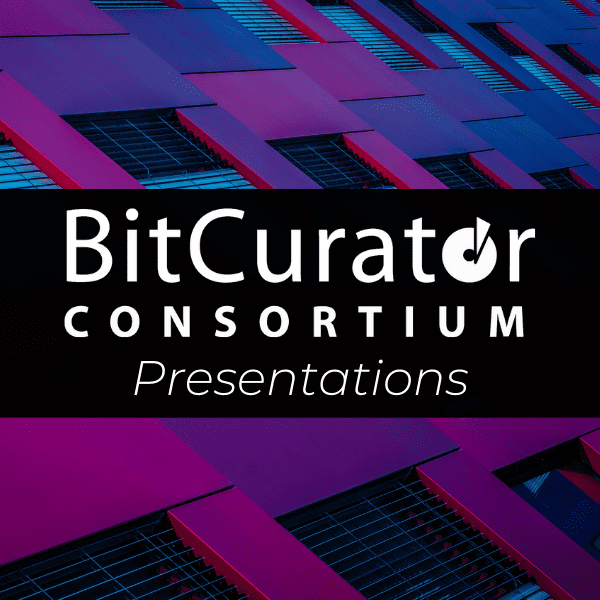Session 9 – Nuts and Bolts of Digital Archives
Dianne Dietrich, Susan Malsbury, David Teneholtz | BitCurator Consortium
A practical approach to working with proprietary file formats
At The New York Public Library, archival collections increasingly contain proprietary file formats related to music and video editing, desktop publishing, and design and drafting software programs. This presentation will discuss approaches the Digital Archives Program at NYPL has been developing to systematically acquire, appraise, arrange and describe proprietary file formats, as well as prepare the files for preservation. Topics that will be touched on include: what information is needed about the software and corresponding file formats to appraise and describe files, identification of gaps in digital preservation resources and how to fill them, and strategies for knowledge sharing with other institutions.
- Susan Malsbury, NYPL
A DIY Approach to Data Recovery from Damaged 5.25” Floppy Disks
At RAND’s Corporate Archive, work is ongoing to recover data from a collection of damaged 5.25” floppy disks. The fragility of the medium itself poses unique challenges during the capturing process, and the end result is often that files are captured with minor or significant corruption. A single disk is captured 3 times in order to control for the variations in the capture process, but further preservation tasks on these files are inhibited due to the quality of some captures. This presentation will lay out the hardware and software tools, along with the cleaning methods for disks and drives, that I have found result in the most successful captures, while still being an affordable in-house DIY workflow. The presentation will also describe the ongoing work to “merge” the successfully captured information within files together into a “modified master” copy.
- David Tenenholtz, RAND Corporation
Computer Hardware for the Digital Archivist
Parallel ports, VGA cables, and floppy drives, oh my! This presentation will focus on the nuts and bolts of hardware needed to understand (mostly older) PC systems. Drawing from my own collection of orphaned computer parts and various contemporaneous hardware guides, I will outline the basic innerworkings of a desktop computer and explain how all of the pieces fit together. I’ll also talk about how the core components of PC hardware have changed over time, and how to identify what you’re looking at. The aim of this presentation is to offer a starting point for understanding computer hardware, which can help in a variety of archival contexts: from tackling data recovery from older media (e.g., various internal hard drive types) to even contextualizing emulation strategies for older software and file formats.
- Dianne Dietrich, Cornell University

Dianne Dietrich, Susan Malsbury, David Teneholtz. (September 14, 2018). Session 9 – Nuts and Bolts of Digital Archives. BitCurator Consortium.